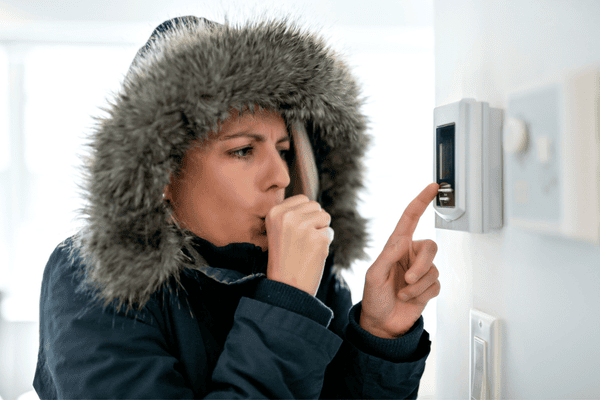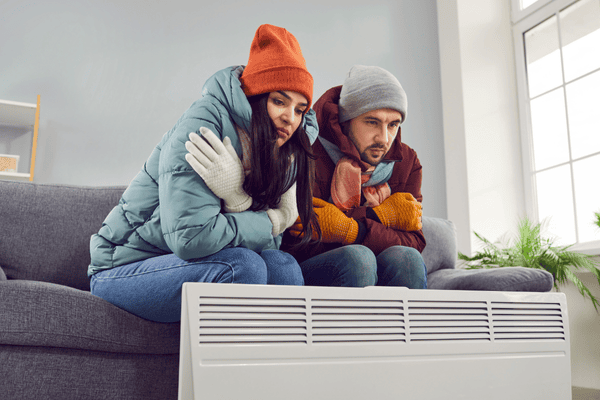Got A Furnace Blowing Cold Air Instead Of Heat? Here’s What to Do


Is Your Furnace Feeling Frosty? Here’s How to Fix It
Picture this: it’s one of those icy winter nights, and you’re looking forward to a warm, cozy evening. You turn on your furnace, expecting that familiar comforting heat, but instead, you’re met with a blast of cold air. Sound familiar? Unfortunately, a furnace blowing cold air is a common issue that no one wants to deal with when temperatures drop.
The good news? Many of these problems have simple fixes, and even when they don’t, knowing the signs can help you decide when to call in the pros. In this guide, we’ll walk you through common reasons your furnace might be blowing cold air, how to troubleshoot the issue, and when it’s time to get professional help.
1. First Things First: Is It Really Cold Air?
Before you panic, take a moment to confirm whether your furnace is truly blowing cold air or if there’s something else going on.
- Warm-Up Time: Furnaces don’t produce hot air instantly. It can take a few minutes for the system to heat up and for warm air to start circulating.
- Thermostat Settings: Check that your thermostat is set to “Heat” and that the fan mode is on “Auto” instead of “On.” When set to “On,” the fan runs continuously—even when the furnace isn’t actively heating—which can feel like cold air.
- External Drafts: Drafts from poorly insulated windows or doors can cool the room, making it seem like your furnace isn’t doing its job.
If none of these explanations fit, it’s time to dig deeper into what might be causing the issue.
2. Thermostat Troubles: The #1 Culprit
The thermostat is essentially your furnace’s brain, and if it’s not functioning correctly, the whole system can act up.
What to Check on Your Thermostat:
- Set to “Heat”: Make sure the thermostat is on the correct setting.
- Temperature Settings: The target temperature should be higher than the current room temperature to trigger the heat.
- Fan Mode: Select “Auto” so the fan only runs during heating cycles, preventing cold air from circulating when the furnace isn’t heating.
Upgrade Your Thermostat:
If your thermostat is outdated or unresponsive, it might be time to consider upgrading to a smart thermostat. These devices not only provide more precise temperature control but can also improve energy efficiency and alert you to potential system issues before they become serious.
Read more about Smart Thermostats here.
3. Furnace Filters: When Dirt Causes Cold Blasts
A dirty or clogged air filter is one of the most common reasons for furnace problems. Filters trap dust and debris to keep your air clean, but when they get clogged, they can restrict airflow and cause your furnace to overheat and shut off prematurely—or blow cold air.
How to Check and Replace Your Filter:
- Turn off your furnace to ensure safety.
- Locate the air filter, typically near the air intake or blower.
- Remove the filter and inspect it. If it looks gray, dusty, or clogged, it’s time for a replacement.
- Replace with a filter that matches your furnace’s specifications.
Pro Tip: Check your filter every 1–3 months during the heating season to keep your system running efficiently.
4. Pilot Light Problems: When Your Furnace Loses Its Spark
For gas furnaces, the pilot light plays a critical role in igniting the burners that produce heat. If the pilot light goes out, your furnace can’t do its job and will blow cold air instead.
Steps to Relight Your Pilot Light:
- Turn off the furnace and wait a few minutes for any residual gas to dissipate.
- Locate the pilot light assembly (check your furnace manual for guidance).
- Use a match or lighter to relight the pilot, holding the reset button for 30 seconds.
Warning: If you smell gas or feel uncomfortable attempting this, call a professional immediately. Safety first!
5. Electric Furnace or Heat Pump? Common Cold Air Causes
If you have an electric furnace or a heat pump, different issues might be at play:
Electric Furnace Issues:
- Tripped Circuit Breaker: A tripped breaker can cut power to your furnace’s heating elements, leaving you with a fan that only blows cold air.
- Faulty Heating Element: Over time, heating coils can wear out and stop working.
Heat Pump Problems:
- Low Refrigerant Levels: Heat pumps rely on refrigerant to transfer heat. If levels are low, the system may struggle to produce warm air.
- Frozen Outdoor Unit: Ice buildup on the outdoor unit can prevent proper heat transfer.
These problems often require professional expertise to diagnose and repair.
6. Leaky Ductwork: The Silent Heat Thief
Even if your furnace is producing warm air, that heat can be lost before it reaches your vents due to leaks in your ductwork.
How to Inspect Ductwork for Leaks:
- Check accessible ductwork for gaps, holes, or disconnected sections.
- Feel for air escaping around seams and joints.
- Use HVAC tape or mastic sealant to patch small leaks.
For larger issues or hard-to-reach areas, schedule a professional duct inspection to ensure your system is running efficiently.
7. When to Call in the Professionals
Sometimes, furnace issues go beyond DIY fixes. If you notice any of the following, it’s time to bring in the experts:
- Strange Noises: Banging, screeching, or rattling sounds could indicate serious mechanical issues.
- Burning Smells: Persistent odors may signal an overheating component or other safety concerns.
- Frequent Cycling: If your furnace keeps turning on and off, it’s a sign something isn’t functioning correctly.
- Skyrocketing Energy Bills: An inefficient system can lead to unexpected spikes in your utility costs.
Don’t wait—acting quickly can prevent more costly repairs down the road.
8. Preventative Maintenance: Keeping Your Furnace Running Smoothly
The best way to avoid cold-air surprises is to keep your furnace in tip-top shape with regular maintenance.
Furnace Care Checklist:
- Schedule annual professional tune-ups to catch and fix potential issues early.
- Change your air filter regularly to maintain proper airflow.
- Clean and inspect vents and ductwork for obstructions or damage.
- Test your thermostat periodically to ensure accurate temperature control.
Bonus Tip: Consider signing up for a maintenance plan with Livinon Mechanical to keep your furnace running smoothly all season long.
Conclusion: Bring Back the Heat with Livinon Mechanical
A furnace blowing cold air can turn a cozy winter night into a chilly frustration, but it doesn’t have to ruin your season. From simple DIY fixes like adjusting your thermostat or replacing your air filter to professional repairs for more complex issues, there’s always a solution.
If your furnace still isn’t cooperating, let Livinon Mechanical help. Our team of HVAC experts is here to diagnose and fix the problem quickly, so you can get back to enjoying a warm, comfortable home.
Don’t wait—contact us today for reliable furnace repairs, maintenance, and smart solutions to keep your home cozy all winter long!
